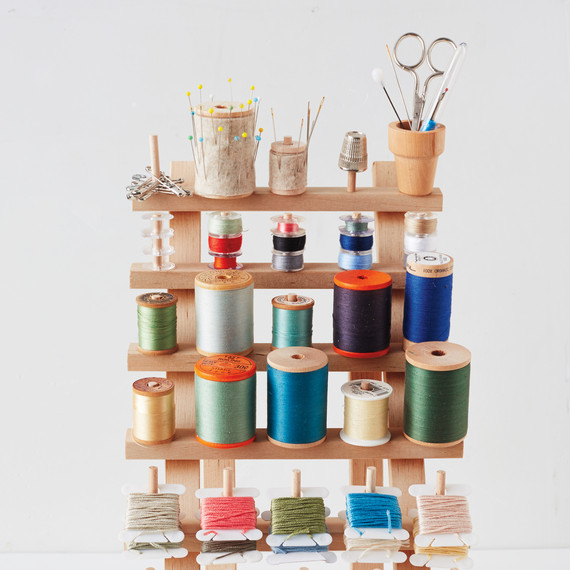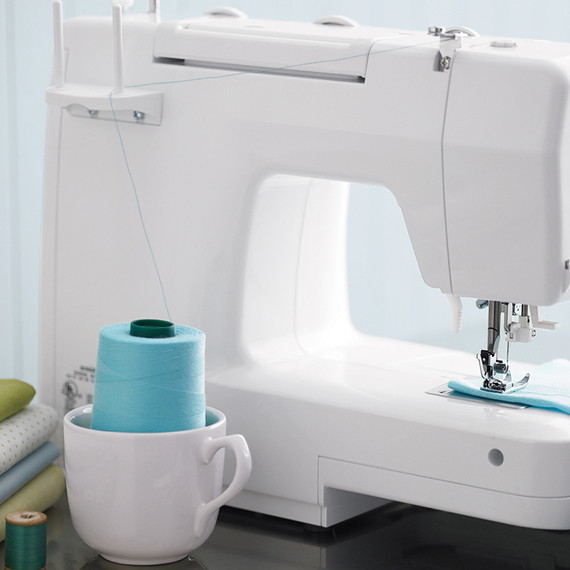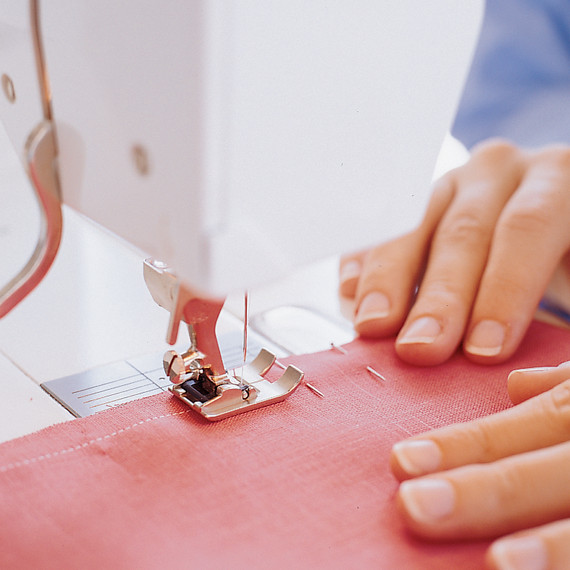3 مشاكل آلة الخياطة الشائعة (وكيفية إصلاحها)
عندما تتعلم مهارة جديدة ، لا بد من وجود خطأ أو اثنين ؛ كل ذلك جزء من منحنى التعلم. ولكن حتى الخياطين المهرة يمكن أن يقعوا ضحية لغرز مخفوق أو إبرة مكسورة ، أو ما قد يكون الأكثر إزعاجا من جميع أنواع الصداع لآلات الخياطة: خيط الخيط. عندما تسمع هذا الطنين المهتاج من جهازك – اشرح “اليأس” الداخلي – اعتبر ذلك إشارة استغاثة.
قد تختلف التفاصيل قليلاً اعتماداً على طراز ماكينة الخياطة وطرازها – لذلك نقترح أن تتعرف على آليات جهازك – لكن الأساسيات هي نفسها. سواء كنت محترفًا سلسًا أو مبتدئًا مع الإبر ، فلدينا حلول لا تتخلص من المشاكل الأكثر إزعاجًا.

المشكلة: الخيط يتكدس تحت النسيج.
الحل: يمكنك الحصول على غرزة مستقيمة تماما في الأعلى ، ولكن “عش الطائر” يتشكل في القاع. إذن لماذا التناقض؟ يميل الناس إلى التفكير في أن اللوم يقع على عاتقهم. في الواقع ، هذا لا يمكن أن يكون أبعد عن الحقيقة. يتراكم الخيط – عادة ، تحت النسيج – لأنه لا يوجد أي توتر على الخيط العلوي. يبدو بديهيا ، صحيح?
لا يزال ، وهنا ما يجب القيام به: أولا ، رفع رافع القدم كوى وإعادة النظر في الجهاز. هذا يفتح آلية التوتر لاستقبال الخيط. ثانيًا ، ستحتاج إلى رفع رافعة السحب والإبرة إلى أعلى موضع وفقًا لدليل جهازك. من المفترض أن يساعدك هذا على التأكد من وجود التوتر المناسب لديك.

المشكلة: تخرج الغرز بشكل متفاوت أو تخبط كليًا.
الحل: الاحتمالات هي ، المذنب السري هنا هو إبرة مكسورة أو عازمة أو غير ذلك من التلف. يوصي الخبراء أن تقوم باستبدال الإبر الخاصة بك لكل 16 ساعة من وقت التركيب.
الاحتمال الآخر هو كيف تتعامل مع القماش أثناء الخياطة. إذا كان لديك ميل – وكثير منا يفعل ذلك – لسحب القماش من الخلف لجعله يمر عبر الآلة ، يمكن أن تؤدي الممارسة إلى خياطة غير نظيفة ويمكن حتى كسر جهازك. هذا النوع من الإطعام بالقوة للنسيج يعمل ضد كلاب التغذية (الحواف المعدنية التي تشبه أسنانها والتي تحبس الجزء السفلي من النسيج ، وتلتصق به للإبتعاد عن الإبرة حيث يتم خياطة الحياكة). العمل مع الجهاز – لا تجبره.

المشكلة: الإبرة تبقي كسر.
الحل: هذا يتلخص في سؤال متابعة واحد ، “هل تستخدم الإبرة الصحيحة؟” يمكن أن يؤدي الانتقال لأعلى أو لأسفل إلى الحجم المرقّم بشكل مناسب إلى إحداث فرق كبير. يتراوح حجم الإبر من 8 إلى 18 اعتمادًا على استخدامها. مقاس 9 أو 11 يعمل بشكل أفضل مع الأقمشة الرقيقة الخفيفة مثل الشيفون والحرير والأورجانزا. مقاس 14 أفضل ما يناسب الأقمشة ذات الوزن المتوسط مثل الفانيلا والكتان والويديس الاصطناعية. ويخصص حجم 16 (أو يفضل) 18 للأقمشة الثقيلة الوزن مثل الدنيم. لذلك ، فإن إبرة مقاس 9 مقاس من الدنيم ستكسر الإبرة حتمًا. بالإضافة إلى ذلك ، هل تستخدم النوع الصحيح – أي نقطة الكرة ، النقطة العادية أو نقطة الإسفين؟ للرجوع إليها ، يمكنك التحقق من مخطط بالحجم الكامل هنا.
لا تزال تواجه مشاكل؟ هذه القائمة المرجعية من ثلاث خطوات يمكن أن تحل بسهولة معظم الحوادث المؤسفة.
1. تنظيفه: متى كانت آخر مرة قمت فيها بمسح شامل لآلية جهازك من الأعلى إلى الأسفل؟ يمكن أن يتراكم الغبار والوبر بهدوء وبسرعة في منطقة البكر وتجميع الشد ، لذلك يجب أن يتم صيانة الماكينة بشكل احترافي بانتظام. إذا كنت تستخدم يوميا ، هناك حاجة لتنظيف أسبوعي. للاستخدام الأسبوعي فقط ، قم بتنظيفه مرة واحدة في الشهر. وللاستخدام الشهري العرضي ، قم بتنظيفه كل ثلاثة أشهر.
2. إعادة النظر في جهازك: نعم ، حتى أدنى نتوء يمكن أن يؤثر على خياطة الخاص بك. تحقق من البكرة ، والإبرة ، والخيوط للتأكد من أن eveything في المكان المناسب.
3. تحقق من إبرة وخيط الخاص بك: كما ذكرنا سابقا ، استخدام الحجم المناسب ونوع الإبرة أمر حتمي. بالإضافة إلى ذلك ، يجب عليك استخدام خيوط ذات جودة عالية – سيكون لها خيوط ناعمة ولطيفة ولا تكون “غامضة” أو متفاوتة في السماكة. الخيط له عمر افتراضي – على الرغم من اختلاف أنواعه بشكل مختلف – لذا احتفظ بمجموعتك من التخزين المؤقت وتخزينها بشكل صحيح (من الرطوبة وأشعة الشمس المباشرة).

26.04.2023 @ 22:21
Learning a new skill requires making mistakes, its all part of the learning curve. Even skilled tailors can fall victim to tangled threads or broken needles, or what may be the most annoying of all sewing machine headaches: thread bunching. When you hear that agitated hum from your machine – explain the inner “despair” – consider it a distress signal. The details may vary slightly depending on the model and make of your sewing machine – so we suggest getting familiar with your machines mechanics – but the basics are the same. Whether youre a smooth professional or a beginner with needles, we have solutions to get rid of the most annoying problems.
When facing the problem of thread bunching under the fabric, the solution is to get a perfectly straight stitch on top, but a “birds nest” forms at the bottom. So why the contradiction? People tend to think the blame lies with them. In fact, this couldnt be further from the truth. The thread accumulates – usually under the fabric – because there is no tension on the upper thread. It seems obvious, right? Still, heres what you need to do: first, raise the presser foot and re-examine the device. This opens the tension mechanism to receive the thread. Second, youll need to raise the puller and needle bar to the highest position according to your devices guide. This should help you ensure that you have the proper tension.
If the stitches come out uneven or completely messed up, the culprit here is a broken or bent needle or other damage. Experts recommend replacing your needles every 16 hours of installation time. The other possibility is how you handle the fabric while sewing. If you have a tendency – and many of us do – to pull the fabric from the back to make it pass through the machine, the practice can lead to messy sewing and can even break your machine. This type of force-feeding the fabric works against feed dogs (metal teeth-like edges that hold the bottom part of the fabric, and stick to it to move away from the needle where the stitching is done). Work with the machine – dont force it.
If the needle keeps breaking, it all boils down to one follow-up question, “Are you using the right needle?” Moving up or down can make a properly sized needle make a big difference. Needle size ranges from 8 to 18 depending on its use. Size 9 or 11 works best with lightweight fabrics such as chiffon